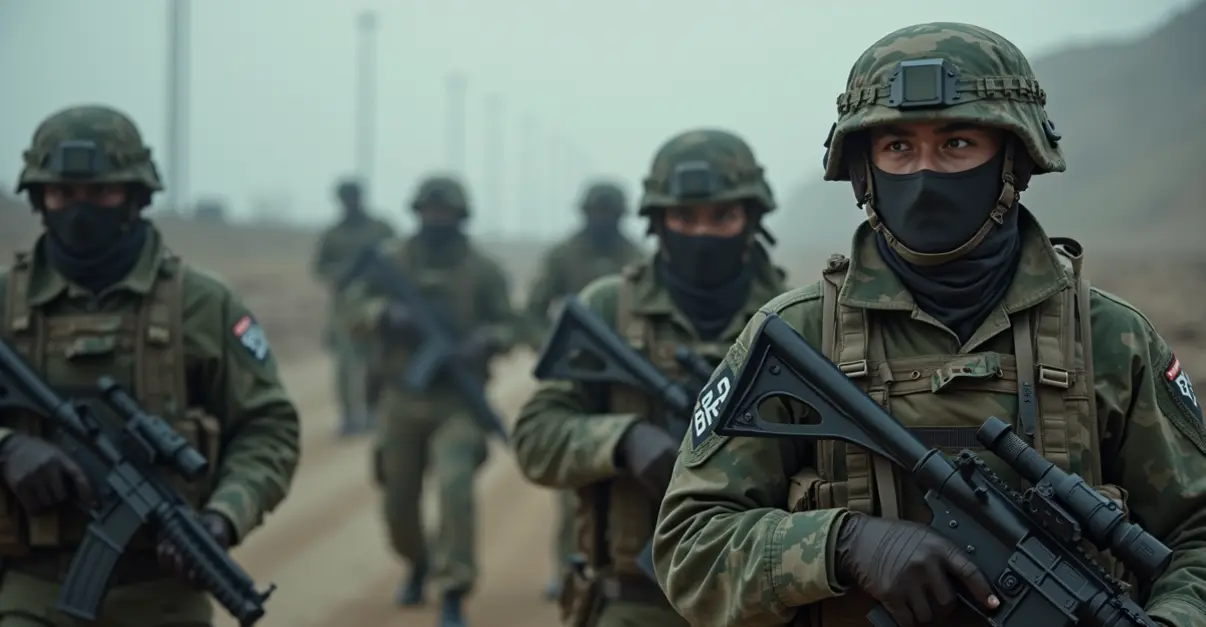Hybrid warfare combines cyberattacks, disinformation, and traditional military force to create multi-dimensional conflicts. This strategy operates in the gray zone between war and peace, making attribution difficult and requiring integrated defense approaches.

The New Face of Modern Conflict
Hybrid warfare has emerged as the dominant strategy in contemporary global conflicts, blending sophisticated cyberattacks with traditional military force to create a multi-dimensional battlefield. This approach, defined by military strategist Frank Hoffman as 'the emerging simultaneous use of multiple types of warfare by flexible and sophisticated adversaries', represents a fundamental shift in how nations and non-state actors pursue their strategic objectives.
The Anatomy of Hybrid Warfare
At its core, hybrid warfare combines conventional military capabilities with irregular tactics, cyber operations, disinformation campaigns, and political subversion. As noted in a recent 2025 analysis, this strategy operates in the 'gray zone' between peace and war, making attribution difficult and traditional responses ineffective. The approach allows aggressors to achieve their goals while avoiding full-scale kinetic escalation.
Military analyst James O'Connor explains: 'What makes hybrid warfare so effective is its layered approach. While conventional forces create pressure points, cyberattacks disrupt critical infrastructure, and disinformation campaigns erode public trust - all working in concert to achieve strategic objectives without triggering traditional military responses.'
Real-World Applications in 2025
The ongoing conflict between Russia and Ukraine demonstrates hybrid warfare in action. According to recent analysis, Russia has refined its hybrid strategy since the 2014 Crimea annexation, now employing aggressive cyber warfare targeting energy grids and government systems alongside sophisticated electronic warfare that disrupts GPS signals and drone communications. The use of proxy forces like the Wagner Group provides plausible deniability while coordinated disinformation campaigns on platforms like RT and Telegram erode international support for Ukraine.
Similarly, the 2025 Israel-Iran conflict has expanded into cyberspace with sophisticated hybrid tactics. As detailed in security reports, Israel launched cyber strikes through the group Predatory Sparrow, destroying data at Iran's Bank Sepah and breaching cryptocurrency exchanges, while Iran responded with psychological warfare including fake text messages spoofing Israel's Home Front Command to sow panic among civilians.
The Cyber Dimension
Cyberattacks have become a cornerstone of hybrid warfare strategies. Recent incidents documented by CSIS show how state-sponsored actors are increasingly targeting critical infrastructure. North Korea's Lazarus group has been targeting European defense companies for drone technology, while Russian cybercrime groups have breached UK Ministry of Defence contractors. These attacks demonstrate how cyber capabilities complement traditional military operations by creating chaos and disruption behind enemy lines.
Dr. Elena Vasquez, a cybersecurity expert at the Center for Strategic and International Studies, notes: 'The integration of cyber operations with conventional military tactics represents a paradigm shift. We're seeing attacks that simultaneously degrade military command systems while disrupting civilian infrastructure, creating maximum pressure on both military and political fronts.'
Defensive Challenges and Solutions
Countering hybrid warfare requires multi-domain resilience and whole-of-society approaches. Traditional military defenses are insufficient against these blended threats. As outlined in recent security briefings, effective defense requires public-private partnerships, civic education to counter disinformation, and international coordination through intelligence sharing and unified diplomatic responses.
The evolving nature of hybrid warfare means that nations must adapt their defense strategies accordingly. As James O'Connor concludes: 'The future of conflict lies in this gray zone where cyber, information, and conventional operations merge. Success will depend on our ability to develop integrated responses that address threats across all domains simultaneously.'

 Nederlands
Nederlands
 English
English
 Deutsch
Deutsch
 Français
Français
 Español
Español
 Português
Português









